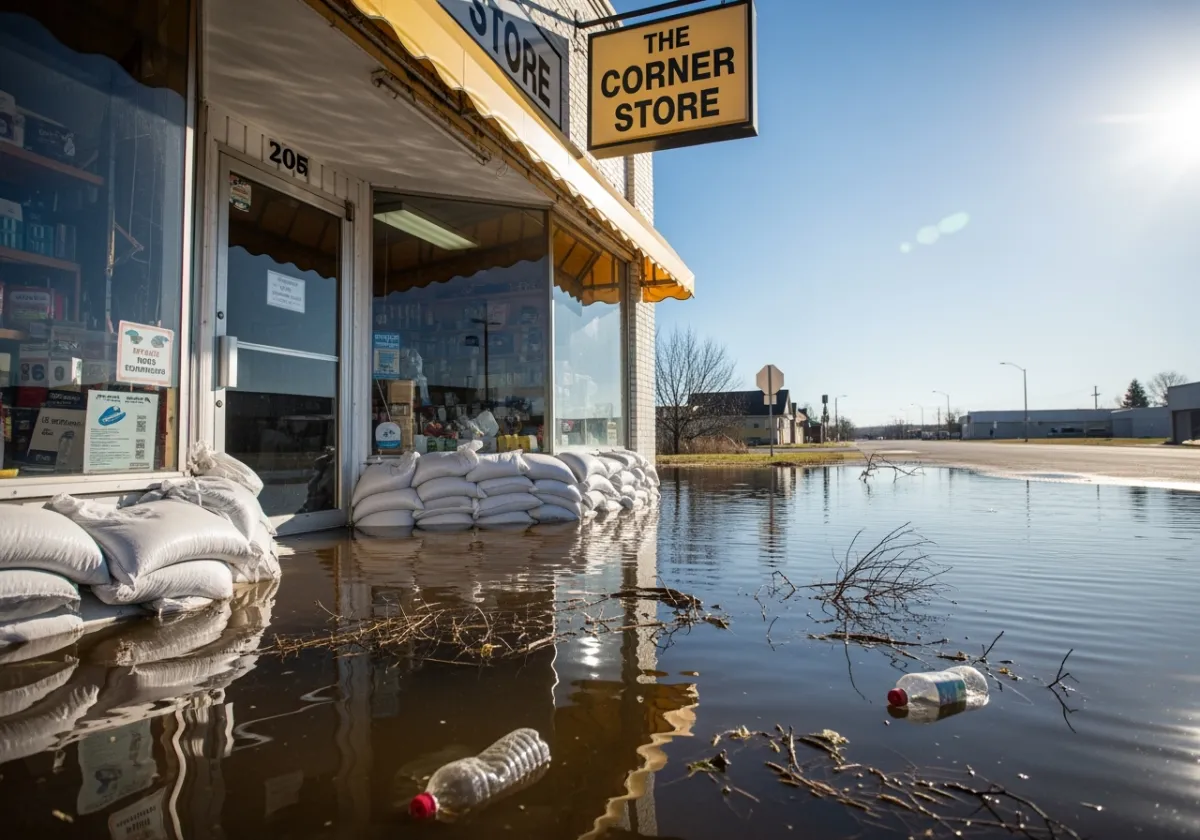
Floods, Fires, and Business Resilience: Why Preparation Is a Core Part of Sustainability
Floods, Fires, and Business Resilience: Why Preparation Is a Core Part of Sustainability
Natural disasters aren’t rare anymore—they’re part of the new normal for businesses across the U.S. This July, for the third year in a row, parts of Vermont have faced devastating flooding. From Texas’s flash floods to wildfires in the West, more businesses are finding themselves at risk. The question isn’t if a disaster will strike, but when—and how prepared your business will be.

Building resilience against these threats isn’t just about bouncing back—it’s a sustainable strategy. When you make your business more resilient, you’re protecting your people, your mission, and your long-term ability to operate responsibly, no matter what comes your way.
Why Are Floods and Wildfires Getting Worse?
Climate change is making extreme weather events like floods and wildfires more frequent and severe. Warmer air holds more moisture, leading to heavier downpours and flooding. At the same time, hotter, drier conditions in other regions are fueling more intense wildfires.
Key factors:
Heavier rainfall (flooding in Vermont, Texas, and beyond)
Longer, hotter fire seasons (California, Colorado, and other western states)
Aging infrastructure and urban development—less natural land to absorb water or act as a firebreak
Real-World Impacts: Vermont, Texas, and the Wildfire West
Vermont (2023–2025): For three consecutive Julys, historic floods have hit towns like Montpelier. Small businesses have lost inventory, equipment, and months of revenue—some have closed for good.
Texas (2024): Houston’s record rainfall led to weeks of closures for manufacturers and retailers. Many businesses faced uninsured losses and supply chain chaos.
Wildfires (West Coast): Entire communities in California and Colorado have evacuated, losing property, records, and the ability to operate for weeks or months.
3 Steps to Prepare Your Business for Disasters
1. Know Your Risks & Check Your Insurance
Flood: Use FEMA’s Flood Map Service Center to check your risk.
Wildfire: Check local fire risk maps.
Review your insurance—standard business policies usually don’t cover flood or wildfire damage. Ask your agent about supplemental coverage.
2. Protect Your Critical Assets
Store vital documents, inventory, and electronics above ground level or in waterproof/fireproof containers.
Digitize important records and back up files to the cloud for remote access.
3. Make and Practice an Emergency Plan
Create a simple checklist for your team: how to shut down, who to contact, and evacuation routes.
Practice your plan at least once a year—make sure everyone knows their role for floods, fires, or any crisis.
Resilience: The Heart of Sustainable Business
Resilience isn’t just about surviving disasters—it’s about building a business that can adapt, recover, and continue to serve your community even as risks change. Embedding resilience into your operations is a sustainable strategy: it protects your resources, supports your team’s wellbeing, and ensures you can keep making a positive impact no matter what.
At GoViably, we see resilience as a pillar of sustainability. When you plan for the unexpected, you’re not just protecting your bottom line—you’re modeling responsible leadership and building a stronger, more sustainable future for everyone.
If you want help building a resilience plan or embedding sustainability into your business, schedule a consultation with GoViably. We’re here to support you every step of the way.